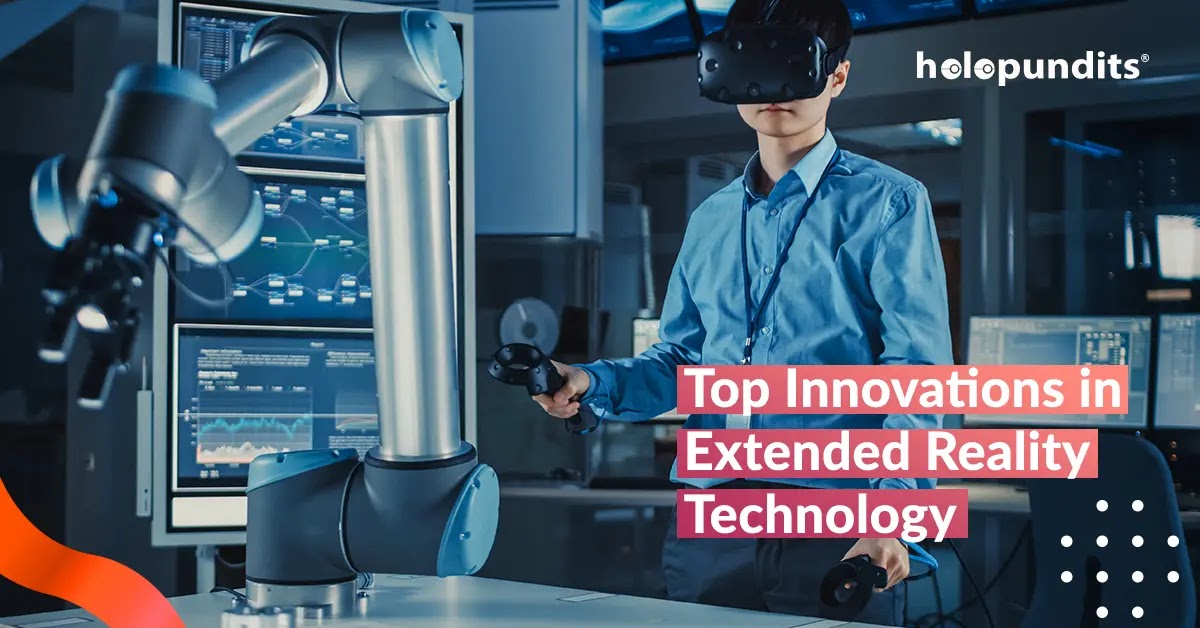Top Innovations in Extended Reality Technology

Virtual Reality Headsets
Virtual reality would obviously be nowhere without VR headsets, but its not the headset itself that is innovative. It's how it became mainstream. VR head mounted displays (HMDs) were in regular use in military training, pilot simulations, and arcades. In 2012, Oculus VR created a Kickstarter campaign that raised $2.4 million by the end of the campaign. Using this innovative solution to what would otherwise be an incredible upfront expense, Oculus VR simultaneously funded the creation of the Oculus headset and introduced VR headsets into homes around the world. This Kickstarter campaign opened up an entire new world of technology to the mainstream public.
Augmented Reality Glasses
Augmented reality has been around for as long as virtual reality, integrating itself into homes a little more seamlessly than its counterpart, and without as much pomp and circumstance. AR technology had a more subtle entry into the public eye. That's because there's no crazy special equipment needed to use augmented reality. The only thing a person needs in order to use it is their smart phone or tablet. Social media marketers have utilized AR for the better part of the decade, allowing customers to try on clothes, shoes, and glasses digitally before purchase. Augmented technology is simple, affordable, and intuitive.
It isn't hands free, however. Users need to hold their phone in order to use augmented reality. Maybe its not so arduous a task, however, with the advent of augmented reality glasses, users can now use AR technology to access files, translation information, and more without letting go of their drink. Microsoft's Hololens is one headset that enables the hands-free access of vital information to doctors, construction workers, and more.
Mixed Reality Technology
Speaking of the Hololens, it's actually a headset that enables the use of "mixed reality" or MR. Compared to augmented and virtual reality, mixed reality is a relatively new technology. It combines the use of each, allowing for a seamless digital interaction with the physical world. The Hololens itself uses multiple sensors, advanced optics and holographic processing that meld with the user's physical environment.
Holograms are one form of mixed reality, projecting a physical 3D interpretation of digital information onto a physical surface, similar to Leah's hologram in Star Wars. The Hololens itself has been implemented into hospitals to reduce PPE costs, training time, and cost associated with poorly trained employees.
Augmented and Virtual Reality in Training and Education
Both VR and AR have been used in training for decades now, but new training programs have been established for people outside of the military and flight schools. XR technology has been used more recently for retail training, training with heavy machinery, and simulation training for interpersonal interactions. This is especially beneficial because it allows trainees to test out scenarios and learn from the simulated interactions in a low risk/high reward situation before ever interacting with customers, harmful chemicals, or dangerous tools.
XR training is especially helpful for both training and education because of the interactive methods of learning information. It allows for higher knowledge and memory retention, which lends its benefits to the educational sphere specifically. Students have a gamified and intentional way of interacting with the lesson content, giving them actual hands-on experience with critical information. It also gives students the opportunity to explore different career paths in a low stress environment, allowing for them to make decisions based on actual experience, and not just hypothesized information.
Augmented Reality and Virtual Reality in Construction, Manufacturing, and Healthcare
In more recent years, development specifically for construction, manufacturing, and healthcare has been given more time and attention. This has led to innovation in use cases, including surgical practice, architectural design, and tools enabling high amounts of accuracy in the workplace; both in office and on site.
Healthcare has already been moderately discussed, so let's move on to manufacturing and construction. Using 3D designing capabilities on virtual reality HMDs, architectures are able to accurately design and prototype building layouts and models that ensure that no time or money is wasted on remodeling and layout redesigns. VR headsets are also used to show project managers and investors early iterations of the design and let them walk the halls of the project on site before the project is complete.
Augmented reality headsets have also been adapted and attached to hard helmets to ensure safety on site while also giving workers accuracy with every hammer strike. The headsets are equipped with 3D scale models of the project to show workers project specifics. XR is integrated deeply into our system of production, from design to prototyping, to construction and repairs. The technology is there every step of the way to ensure the highest level of accuracy.
Extended Reality Arcades
It would be a tragedy if VR arcades were not mentioned at least once. Arcades have been around since video games were invented. But with the creation and development of VR implemented video games, came the creation of spaces specifically for the use of extended reality technology. Arcades are generally there as a space for community gathering, a place where people can come together and spend a night of entertainment in a like-minded way.
VR arcades specifically enable users to test out the technology, as well as games specific to the technology, at a lower cost than purchasing the equipment outright. This is an important step because, while VR is available for everybody, not everybody will enjoy the virtual experience. There will inevitably be some people who buy the equipment because everybody else is, try it out and decide they don't like it, and then offer reasons counter to the further development of VR technology. They also serve to help users test out equipment with people who are more knowledgeable on the subject than they are.
Why is Extended Reality Important?
Simply put, XR technology is the future. Of what? Just about everything. Extended reality is swiftly creating an easier, more streamlined process of just about everything. XR has become such an ingrained part of everyday life that most people don't even realize that it happened. With the subtle transition from standard methods of learning, it's made an easier way of communicating critical concepts in school lessons, crossed communication barriers from one side of the world to the other, and helped develop some of the best technology available.
Extended reality has faced some challenges in its time, but through perseverance and determination, developers have implemented innovative designs, marketing strategies, and technology to bring the world of XR into the physical world. The technology has become a part of everything we do. It's been around for hundreds of years, at least to a small degree (Thank you, Shakespeare), and will continue to grow and expand for hundreds of years to come.



Comments
Post a Comment